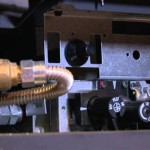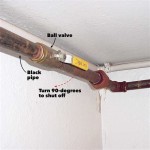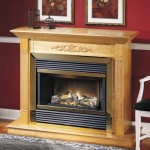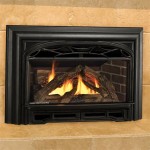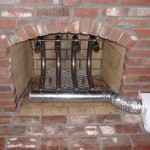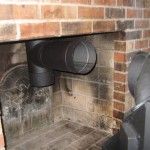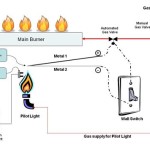How To Baby Proof Your Fireplace Hearth
A fireplace hearth, while adding aesthetic appeal and warmth to a home, presents a significant safety hazard to crawling and newly walking infants and toddlers. The hard edges, sharp corners, and often protruding surfaces of the hearth can cause serious injury in case of a fall or accidental collision. Baby proofing the fireplace hearth is therefore a crucial step in creating a safe environment for young children. This article will outline various methods and considerations to effectively baby proof a fireplace hearth, mitigating potential risks and offering peace of mind to caregivers.
Assessing the Hazards of Your Fireplace Hearth
Before implementing any safety measures, a thorough assessment of the fireplace hearth's specific hazards is necessary. Factors to consider include the height of the hearth, the material it is made from (e.g., brick, stone, tile, concrete), the sharpness of the edges and corners, and the presence of any decorative elements that could pose a danger. A higher hearth presents a greater fall risk, while hard, unyielding materials increase the potential for severe impact injuries. Sharp edges and corners are particularly hazardous, as even minor bumps can result in cuts and bruises. Decorative elements, if loose or easily detached, can become choking hazards. Careful evaluation will inform the most appropriate and effective baby proofing strategies for your specific hearth.
Consider the overall layout of the room and how the fireplace hearth interacts with the surrounding space. Is it located in a high-traffic area where children are likely to be playing? Is there sufficient clearance around the hearth to prevent accidental bumps or falls? Identifying potential problem areas will help you prioritize your baby-proofing efforts and ensure comprehensive safety.
Another important aspect to consider is the frequency of fireplace use. If the fireplace is used regularly, additional precautions must be taken to prevent burns. Even when not in use, the fireplace can retain heat for a considerable amount of time, posing a burn risk to curious little hands. It is essential to have a strategy for managing heat and preventing access to the firebox, especially during and after use.
Implementing Protective Barriers
One of the most effective methods of baby proofing a fireplace hearth is to install a protective barrier that physically prevents children from accessing the hearth area. These barriers come in various forms, each with its own advantages and disadvantages. Options include hearth gates, custom-built enclosures, and freestanding screens.
Hearth gates are specifically designed to enclose the fireplace hearth, providing a secure barrier that prevents children from getting close. They are typically made of metal or durable plastic and feature adjustable widths to accommodate different hearth sizes. Look for gates that meet safety standards and have a secure locking mechanism that is difficult for children to open. Some gates are hardware-mounted, providing greater stability, while others are pressure-mounted, offering easier installation but potentially less security. Hardware-mounted gates are generally recommended for high-traffic areas and for children who are particularly adept at climbing or manipulating objects.
Custom-built enclosures offer a more tailored solution, allowing you to create a barrier that perfectly fits the dimensions of your fireplace hearth and complements your home's decor. These enclosures can be made from wood, metal, or other materials and can be designed with features such as doors or gates for easy access to the fireplace. While custom enclosures offer greater flexibility and aesthetic appeal, they typically require professional installation and can be more expensive than prefabricated gates.
Freestanding screens are another option for creating a barrier around the fireplace hearth. These screens are typically made of metal mesh and can be placed directly in front of the hearth. While they are generally less secure than gates or enclosures, they can provide a visual deterrent and prevent children from getting too close to the fireplace. Freestanding screens are best suited for situations where the fireplace is not frequently used or where only a temporary barrier is needed.
Regardless of the type of barrier chosen, it is essential to ensure that it is properly installed and maintained. Regularly inspect the barrier for any signs of damage or wear and tear, and replace or repair it as needed. Make sure that the locking mechanism is functioning properly and that the barrier is securely anchored to the floor or wall.
Cushioning Sharp Edges and Corners
Even with a protective barrier in place, it is still advisable to cushion the sharp edges and corners of the fireplace hearth to minimize the risk of injury in case of accidental contact. This can be achieved using various types of edge and corner guards, which are typically made of soft, impact-absorbing materials such as foam or rubber.
Edge guards are long strips of cushioning material that can be attached to the edges of the hearth using adhesive. They come in various shapes and sizes to accommodate different edge profiles, and can be easily cut to fit the exact dimensions of your hearth. Look for edge guards that are made of non-toxic materials and that have a strong adhesive backing to prevent them from being easily removed by children.
Corner guards are designed to protect the sharp corners of the hearth. They come in various shapes, such as round, square, and triangular, and are typically attached using adhesive. Choose corner guards that are large enough to cover the entire corner and that are made of a durable, impact-absorbing material. As with edge guards, ensure that the corner guards are made of non-toxic materials and have a strong adhesive backing.
When installing edge and corner guards, clean the surface of the hearth thoroughly to ensure proper adhesion. Apply the adhesive according to the manufacturer's instructions and press the guards firmly into place. Allow the adhesive to cure fully before allowing children to play near the hearth. Regularly inspect the edge and corner guards for any signs of damage or loosening, and replace them as needed.
In addition to commercially available edge and corner guards, you can also use DIY solutions such as wrapping the edges and corners of the hearth with thick blankets or towels. While DIY solutions may not be as aesthetically pleasing as professionally made guards, they can provide adequate protection in a pinch. Ensure that the blankets or towels are securely attached to the hearth to prevent them from slipping or being pulled off by children.
Managing Heat and Preventing Burns
If the fireplace is used regularly, it is crucial to take steps to manage heat and prevent burns. This includes installing a fireplace screen, using a fire extinguisher, and educating children about the dangers of fire.
A fireplace screen is a mesh or glass barrier that is placed in front of the firebox to prevent sparks and embers from escaping. It also helps to reduce the amount of radiant heat emitted from the fire, making it safer for children to be near the fireplace. Choose a fireplace screen that is made of durable materials and that fits snugly against the fireplace opening. Ensure that the screen is securely anchored to prevent it from being knocked over by children.
A fire extinguisher should be readily accessible in case of a fire emergency. Make sure that everyone in the household knows how to use the fire extinguisher and where it is located. Regularly inspect the fire extinguisher to ensure that it is properly charged and functioning correctly.
Educating children about the dangers of fire is essential for preventing burns. Teach them to stay away from the fireplace and to never touch the fire or hot surfaces. Explain that fire is hot and can cause serious burns. Supervise children closely when they are near the fireplace, even when it is not in use, as the surface can retain heat for a considerable amount of time.
Consider using a fireplace safety cover when the fireplace is not in use. These covers are typically made of heat-resistant materials and can be placed over the fireplace opening to prevent children from accessing the firebox. Fireplace safety covers can also help to reduce drafts and prevent cold air from entering the room.
Regularly clean the fireplace and chimney to prevent the buildup of creosote, a flammable substance that can cause chimney fires. Have the chimney inspected and cleaned by a professional chimney sweep at least once a year.

Diy Fireplace Hearth Idea For Child Proofing

No Child Proofing For Our Fireplace Hearthstone

How To Baby Proof A Fireplace Diy Hearth Cushion Simply September

Diy Baby Proofing Your Brick Fireplace Thisaveragemom

How To Baby Proof Your Brick Fireplace Diy Hearth Cushion Bench Seat

Baby Proofing Fireplace More Easy Hearth Padding Oh Love

Baby Proof Fireplace Hearth The Cheerful Space

3 Ways To Baby Proof A Fireplace Wikihow

How To Baby Proof A Fireplace Diy Hearth Cushion Simply September

How To Baby Proof A Fireplace Diy Hearth Cushion Simply September
Related Posts

